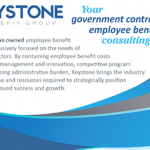Are you comparing “Apples and Oranges” in your benefit programs?
 Are you comparing “Apples and Oranges” in your benefit programs?
Are you comparing “Apples and Oranges” in your benefit programs?
A Benchmark by definition is a standard point of reference against which things may be compared or assessed. Why is benchmarking important? It allows us to assess and compare in order to achieve continuous improvement.
Our research shows that many federal contractors are benchmarking against the wrong data points for their specific benefit programs. Benchmarks are not one size fits all, and many employee benefit consulting firms provide confusing or irrelevant benchmark data that can cause a strain on the bottom line. There is a simple explanation to why:
Standard benchmarks breakout data by geographic region, company size, and industry (i.e. type of work you do and not who you do it for) an “Apples and Oranges” comparison for government contractors.
For Example:
“TED: The Economics Daily” shared information provided by the U.S. Bureau of Labor Statistics:
- The percent of workers with access to short- and long-term disability insurance was 42% and 34% respectively (https://www.bls.gov/opub/ted/2018/employee-access-to-disability-insurance-plans.htm).
Keystone, as an employee benefit consulting firm exclusively focused on the needs to federal contractors, maintains an industry specific benchmarking report. Our benchmark indicates:
- The percent of workers with access to short- and long-term disability are 82% and 83% respectively
There is a staggering difference between those two sets of reported metrics.
When using the wrong benchmark, a federal contractor’s benefit program will not align with the market which can have negative impacts.
- Above market = overpaying for your benefit program. This cost structure will not support a long term “Price to Win” strategy that helps you retain and win more business.
- Under the market = risk being unable to keep current workforce satisfied resulting in high turnover during the contract transition.
It is known that the government wants most of their current contractor workforce to transition to the new contractor, so it is important that benefits will support that transition.
What can you do to make sure you aren’t comparing “Apples to Oranges” with your company’s benefit program?
- Understand the importance of benchmarking, but only if the data used is applicable to your business.
- Make sure during teaming efforts for proposals that you are asking to benchmark each teaming partner’s benefit programs. Benefit program alignment on a team makes for a stronger proposal and provides better employee relations if everyone working on a contract has a similar level of benefits. They don’t have to be exact, but they should be close.
- Find 5 primes that you want to work with and get an understanding of their benefit programs. If they are a large prime contractor, you may not be able to align with them completely, but it gives you a goal to work towards.
- Find an employee benefit consulting firm that works with multiple government contractors of all sizes that can help you build a strategic benefit plan program that supports your long-term business objectives.




